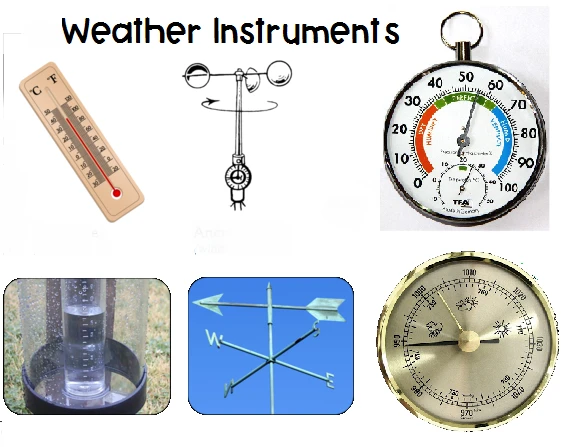
# Weather Instruments: Tools for Measuring Atmospheric Conditions
## Introduction to Weather Instruments
Weather instruments are essential tools used by meteorologists, scientists, and weather enthusiasts to measure various atmospheric conditions. These devices help us understand and predict weather patterns, which is crucial for agriculture, aviation, marine navigation, and daily life planning.
## Common Types of Weather Instruments
### Thermometer
The thermometer is perhaps the most familiar weather instrument. It measures air temperature, typically using mercury or alcohol in a glass tube or digital sensors in modern versions.
### Barometer
A barometer measures atmospheric pressure, which is a key indicator of weather changes. There are two main types:
– Mercury barometers
– Aneroid barometers
### Hygrometer
This instrument measures humidity – the amount of water vapor in the air. Modern hygrometers often use electronic sensors to provide accurate readings.
### Anemometer
Anemometers measure wind speed. The most common type has three or four cups that rotate with the wind, while other versions use ultrasonic or laser technology.
### Wind Vane
Also known as a weather vane, this instrument shows wind direction. It typically has an arrow that points into the wind, indicating the direction from which the wind is blowing.
### Rain Gauge
A rain gauge measures the amount of liquid precipitation over a set period. Simple versions use a graduated cylinder, while more sophisticated models may have tipping buckets or weigh the collected water.
### Pyranometer
This specialized instrument measures solar radiation. It’s particularly important for climate studies and solar energy applications.
## Advanced Weather Measurement Tools
### Weather Balloons
These carry instrument packages called radiosondes high into the atmosphere to measure temperature, humidity, pressure, and wind at various altitudes.
### Weather Radar
Radar systems detect precipitation, its motion, and intensity. Doppler radar can also detect wind speed and direction within storms.
### Weather Satellites
Orbiting satellites provide comprehensive views of weather systems, cloud cover, and other atmospheric phenomena on a global scale.
## Importance of Weather Instruments
Accurate weather measurements are vital for:
– Severe weather warnings
– Climate change research
– Agricultural planning
– Aviation safety
– Marine navigation
– Energy production planning
## Maintaining Weather Instruments
For accurate measurements, weather instruments require:
– Regular calibration
– Proper siting (away from obstructions)
– Routine maintenance
– Protection from extreme conditions
## Conclusion
Weather instruments form the foundation of meteorological science. From simple thermometers to sophisticated satellite systems, these tools help us understand and predict atmospheric conditions, ultimately improving safety and quality of life worldwide. As technology advances, weather instruments continue to become more precise and capable of measuring increasingly complex atmospheric phenomena.
Keyword: instruments of the weather
